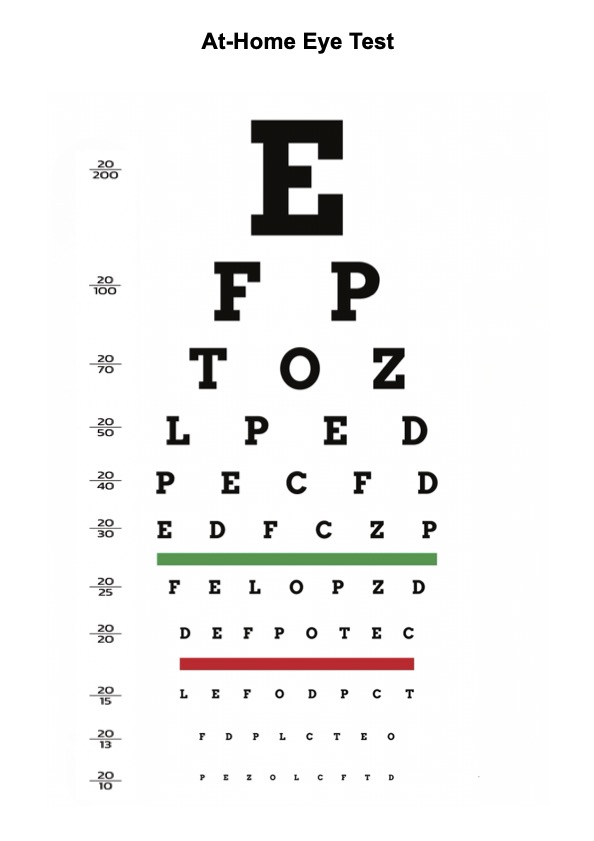An at-home vision test is a preliminary screening tool that enables patients to assess their visual acuity using an eye chart displayed on a computer screen or printed on paper. By covering one eye at a time and reading the smallest line of letters they can clearly see, patients may identify early signs of vision problems such as blurred vision or astigmatism. While helpful for detecting potential issues, this test is not a replacement for a comprehensive eye exam conducted by a trained professional.

At Home Eye Test
Access our free At-Home Eye Test to enable patients to perform a quick and effective preliminary vision screening, helping identify potential issues early.
At Home Eye Test Template
Commonly asked questions
To ensure accurate results, instruct patients to stand 20 feet away from the eye chart. They should cover their left eye, read the smallest line of letters they can see clearly, and repeat the process with the right eye. If patients report difficulty seeing objects or lines, or experience symptoms like headaches, it may indicate the need for further evaluation or an updated prescription.
Yes, an at-home vision test can help detect changes in vision, such as difficulty reading letters, blurred vision, or the need to wear glasses or contact lenses. However, such tests are only a preliminary step. Regular comprehensive eye exams are necessary to confirm the diagnosis, address underlying conditions like glaucoma, and ensure optimal eye health.
EHR and practice management software
Get started for free
*No credit card required
Free
$0/usd
Unlimited clients
Telehealth
1GB of storage
Client portal text
Automated billing and online payments











